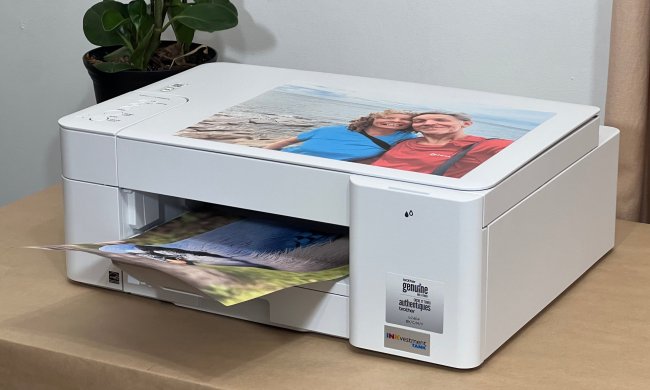To no one’s surprise, the mainstream arrival of digital cameras over a decade ago decimated Polaroid’s business by taking the company’s main attraction – instant photos – and eliminating the need for the film. But unlike the famous white-rimmed squares that could be traded from person-to-person, pinned up on corkboards, and squirreled away for posterity, their digital replacements lacked any real substance outside fleeting glimpses on a screen.
Polaroid hopes to remedy this problem with its new PoGo instant printer, the first mobile printer truly small enough to slip into a pocket. By connecting to compatible cell phones and cameras, the PoGo liberates digital photos from cramped LCD screens and puts them on paper, on the spot, the same way Polaroid’s original instant cameras did as far back as 1948.
Unlike the current generation of “portable” printers that might be luggable from desk-t0- desk or stowed away in a backpack, the PoGo’s dimensions make it small enough to carry on your person all the time, and print photos on the fly. It measures under an inch thick, 2.83 inches wide and 4.72 inches long – a bit like an elongated deck of playing cards. It’s undoubtedly dense, weighing 8 ounces without paper, but still lighter than many of the cameras it’s designed to work with.
Image Courtesy of Polaroid
To allow both cameras and cell phones to connect to the device, Polaroid used two forms of connectivity: Bluetooth and USB cables. The wireless option is clearly suited more for mobile phones, while the USB option should work with any camera that supports PictBrudge, an open standard for printing photos with a computer that began cropping up in about 2003.
In order to make the PoGo so tiny, Polaroid departed the standard 4 x 6 format used in most other photo printers. Instead, the PoGo prints photos in half that size, 2 x 3, and uses Polaroid’s Zero Ink, or ZINK, technology. This method employs billions of dye crystals embedded in the paper to produce color when activated by heat during the printing process. Since there’s no ink, prints are dry-to-touch, water-resistant, tear-proof, and smudge-proof, much like the original Polaroids.
The ZINK paper comes in packs of 10 or 30 sheets, which retail for $3.99 and $9.99 respectively, keeping the cost-per-print down to a reasonable 33 or 40 cents. Much like photos taken with the original Polaroid instant cameras, prints from the PoGo will take about 60 seconds apiece to come out.
True mobility entails freedom from outlets and AC power supplies, and the PoGo uses a 7.2-volt lithium-ion battery to snip the cord. Its life is fairly limited, though. The PoGo can only cough up 15 prints on each charge under ideal operating conditions, so you’ll need to plug it in for extended printing sessions or recharge frequently.
Polaroid will release the PoGo exclusively at Best Buy on July 6 for $149, before making it to Target stores on July 20. That may be more than you paid for your old Polaroid instant camera back in 1980, but with the price of film now reaching about $40 for a 20-pack, and production soon to be discontinued, the price of producing instant prints into the 21st Century remains relatively modest. More information can be found at Polaroid’s PoGo site.



